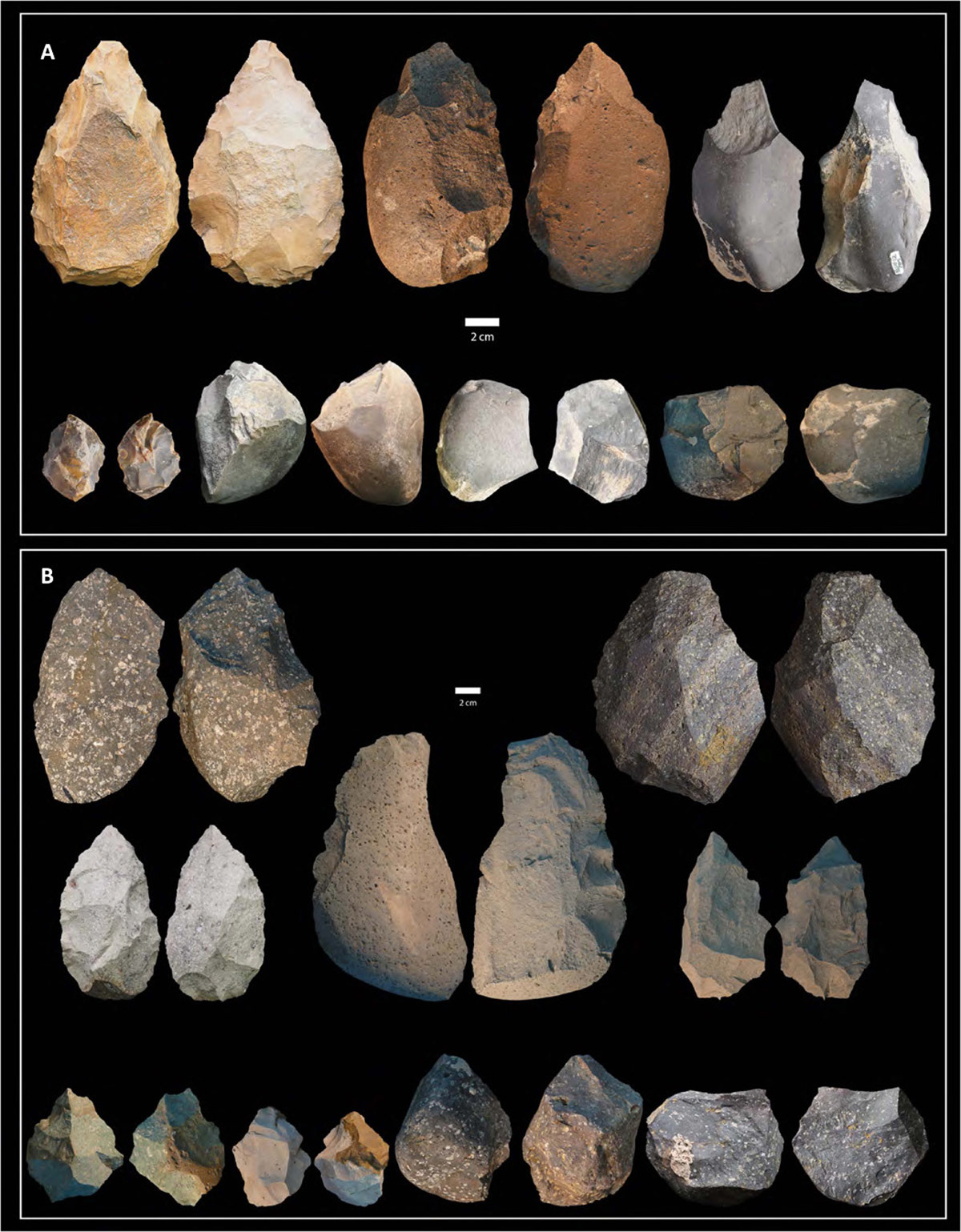- Paleontology.The last Homo erectus survived until 108,000 years ago in Java
- Paleontology.The first emigrants were Homo erectus from 1.3 million years ago
In a sense, Homo erectus has been the most successful hominid from an evolutionary point of view. This extinct species that emerged about 1.8 million years ago survived longer than any other known species, resisting and adapting to all kinds of environmental changes.
He was the first to cook food and the first that, starting from Africa, spread throughout the Caucasus, Middle East, China or Indonesia. Now, the skulls of two individuals who lived over a million years ago in Ethiopia can help researchers illuminate the past of this mysterious species, extinct for 100,000 years .
An international team of scientists, in which the National Center for Research and Human Evolution (CENIEH) participates, has analyzed these fossils, found together with stone tools of different types. The results have been published in the journal Science Advances .
The skulls (known simply as DAN-5 and BSN-12) were unearthed at the Gona field, in the Afar region, within a radius of just six kilometers. A man and a woman geographically close, but distant in time: DAN-5 lived 1.26 million years ago, BSN-12 between 1.6 and 1.5 million years ago. However, both seem to have shared the same technological capabilities , and along with their remains were tools of two clearly differentiated types.
On the one hand, rudimentary pieces to make sharp edges, on the other much more refined artifacts, specifically pear-shaped bifaces. The most accepted theory says that the archaic species of the genus Homo (such as Homo habilis ) created the first stone utensils (Olduvayense industry).
Afterwards, the appearance of Homo erectus would mark the appearance of a new lithic (achelense) technology, although the moment and context in which this technical revolution occurred are still objects of debate. "Most researchers believe that Achelense replaced Olduvayense 1.75 million years ago," says Sileshi Semhaw, archaeologist at CENIEH and first author of the study. "However, our work shows that Homo erectus continued to use Olduvayense for more than a million years."
That the technology inherited by Homo erectus from other species remained in its repertoire after the appearance of Achelenses instruments indicates a flexibility in behavior and a more complex evolutionary history than previously thought. Although knowing how far this sophistication came is complicated; Traces of this species are very scarce and scientists are forced to do much with very little.
"All we have in the archaeological record are stone and fossil tools, and we infer the behavior based on it," explains the researcher, "but with that we cannot say much about their social behavior or how they interacted. For example, we can speculate that they may have used some rudimentary form of language , but we're not sure if it was like the one we know today. "
The most recent skull -BSN-12- is also the largest and most solid. The team believes it belongs to a man, while the oldest, lightest and narrowest -DAN-5- is probably a woman. That would mean that Homo erectus already showed a clear sexual dimorphism: that is, the males were larger and more muscular than the females. Although, at this point, the authors recognize that it is not the only explanation, given the temporal distance between the two individuals.
In any case, BSN-12 is similar to another skull found in the Olduvai Gorge in Tanzania, while DAN-5 shows similarities with other specimens found in Dmanisi (Georgia) with an age of 1.8 million years .
"Gona fossils are proof of a degree of biological diversity in Africa that had not been seen so far , especially because of the small size of the DAN-5 skull," says Scott Simpson, of the Cleveland Museum of Natural History, co-author of the study. "And BSN-12 also presents a relationship with African and East Asian fossils."
These relationships with other fossils could indicate a return to Africa by descendants of populations that had migrated outside the continent. A hypothesis that would bring down the classical conception that the dispersion was unidirectional . Some scientists came defending that, once routes are opened that communicate two territories, the expansion of populations can be back and forth.
On the other hand, the dating of the isotopes of the deposit suggests that both individuals had a varied diet, with plants, eggs, insects and herbivorous animals . Although the authors clarify that they need more data to confirm it. "The groups at both sites lived near rivers, in environments with riverside forests adjacent to open spaces," says Semhaw.
"Next to DAN-5, an elephant phalanx was unearthed with marks caused by stone tools, and a bone of the leg of a small antelope that presented an incision, which means that they dismembered large and small mammals. But, for now , we don't know if they hunted their prey or were scavengers. "
According to the criteria of The Trust Project
Know more- science
- Science and Health
Climate crisis Half of the world's beaches could disappear during this century
EnvironmentExcuses for not recycling: six urban legends you shouldn't believe
Astronomy Find an unusual massive star that formed by joining two white dwarfs

